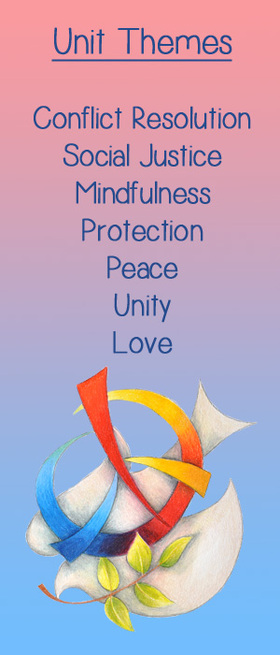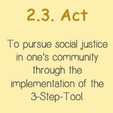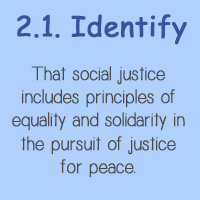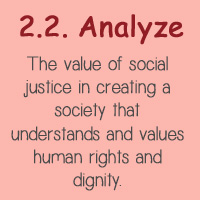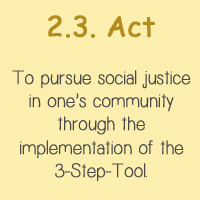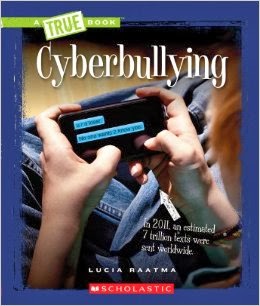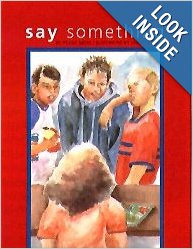Classroom Learning Activities
1. Taking Action Against Social Injustice - A Literary Perspective
Please note:
Below is an annotated list of children's literature for the elementary classroom. The books are organized by the Six Elements of Social Justice Curriculum Design (Picower, 2012). It is based on work by pre-service teachers at Montclair State University. Teacher candidates have read and reviewed these books and provided insights into how they can be used in K-5 settings. If you have any questions or comments, please email bree@nycore.org.
Cyberbullying by Lucia RaatmaThe book Cyberbullying is a resource children can use to learn about and overcome online bullying. It has four chapters. The first chapter describes cyber bullying, explains where on the internet it can happen, how it happens, and what it looks like. The second chapter explains the seriousness of cyber bullying and the negative effects it has on a persons well being. The third chapter explains what to do when being bullied online, who to go to for help, and explains ways you can support your friends who are being cyber bullied. The fourth and final chapter explains multiple ways you can prevent cyber bullying from happening. In addition, the book has real life stories of cyber bullying, statistics on cyber bullying, and gives other resources on bullying.
|
|
Element #6 - Taking Social Action:
Cyberbullying represents element 6 because it guides children to take action against an issue that is affecting them. Bullying is a major issue for children as it can happen anywhere: in school, on the playground, online, at home, etc. Bullying can also negatively impact a child's self esteem and confidence and cause them to feel depressed. In extreme cases, people who are bullied commit suicide. I feel the awareness of bullying is improving and think that books like these should be used as resources in elementary classrooms. They definitely are informative and provide children with ways to stop and prevent bullying. |
Activity:
|
Say Something by Peggy MossAt this school, some children push and tease and bully. Sometimes they hurt other kids by just ignoring them. The girl in this story sees it happening, but she would never do these mean things herself. Then one day something happens that shows her that being a silent bystander isn't enough. Will she take some steps on her own to help another kid?
Bright, fluid, realistic watercolors illustrate the story, set in a school with lots of diversity. Resources at the end of the book will help parents and children talk about teasing and bullying and find ways to stop it at school. One child at a time can help change a school. |
|
Element 6 - Taking Social Action:
This book ties into Element six because it presents a scenario for students to see opportunities to make a change. It targets the students in the classroom as well as outside which makes it a universal learning topic. The narrator took initiative to sit with a girl who was alone to avoid what had happened to her the day before. Saying something or taking action is what this element is all about. Instead of being a bystander, the story can drive children to get involved and help a situation or quickly get authority involved. This book helps aware students of situations that could happen to them and also showing an alternative for how one can handle the problem. It sends children a powerful message and how to deal with an issue regarding bullying. |
Activity:
|
Relevant Convention Articles
Article 3
1. In all actions concerning children, whether undertaken by public or private social welfare institutions, courts of law, administrative authorities or legislative bodies, the best interests of the child shall be a primary consideration.
2. States Parties undertake to ensure the child such protection and care as is necessary for his or her well-being, taking into account the rights and duties of his or her parents, legal guardians, or other individuals legally responsible for him or her, and, to this end, shall take all appropriate legislative and administrative measures.
3. States Parties shall ensure that the institutions, services and facilities responsible for the care or protection of children shall conform with the standards established by competent authorities, particularly in the areas of safety, health, in the number and suitability of their staff, as well as competent supervision.
Article 6
1. States Parties recognize that every child has the inherent right to life.
2. States Parties shall ensure to the maximum extent possible the survival and development of the child.
Article 38
1. States Parties undertake to respect and to ensure respect for rules of international humanitarian law applicable to them in armed conflicts which are relevant to the child.
2. States Parties shall take all feasible measures to ensure that persons who have not attained the age of fifteen years do not take a direct part in hostilities.
3. States Parties shall refrain from recruiting any person who has not attained the age of fifteen years into their armed forces. In recruiting among those persons who have attained the age of fifteen years but who have not attained the age of eighteen years, States Parties shall endeavour to give priority to those who are oldest.
4. In accordance with their obligations under international humanitarian law to protect the civilian population in armed conflicts, States Parties shall take all feasible measures to ensure protection and care of children who are affected by an armed conflict.
1. In all actions concerning children, whether undertaken by public or private social welfare institutions, courts of law, administrative authorities or legislative bodies, the best interests of the child shall be a primary consideration.
2. States Parties undertake to ensure the child such protection and care as is necessary for his or her well-being, taking into account the rights and duties of his or her parents, legal guardians, or other individuals legally responsible for him or her, and, to this end, shall take all appropriate legislative and administrative measures.
3. States Parties shall ensure that the institutions, services and facilities responsible for the care or protection of children shall conform with the standards established by competent authorities, particularly in the areas of safety, health, in the number and suitability of their staff, as well as competent supervision.
Article 6
1. States Parties recognize that every child has the inherent right to life.
2. States Parties shall ensure to the maximum extent possible the survival and development of the child.
Article 38
1. States Parties undertake to respect and to ensure respect for rules of international humanitarian law applicable to them in armed conflicts which are relevant to the child.
2. States Parties shall take all feasible measures to ensure that persons who have not attained the age of fifteen years do not take a direct part in hostilities.
3. States Parties shall refrain from recruiting any person who has not attained the age of fifteen years into their armed forces. In recruiting among those persons who have attained the age of fifteen years but who have not attained the age of eighteen years, States Parties shall endeavour to give priority to those who are oldest.
4. In accordance with their obligations under international humanitarian law to protect the civilian population in armed conflicts, States Parties shall take all feasible measures to ensure protection and care of children who are affected by an armed conflict.
Online Resources and References
- 6 Elements of Social Justice Education - Children's Literature annotated list for the elementary classroom.
- Art Educators - Teaching Ideas of Social Injustice Using Children's Literature by Sarah Ryder.
- British Columbia Ministry of Education - Teaching for Diversity and Social Justice Throughout the K-12 Curriculum: Making Space.
- Equitas - Educate. Empower. Change. - Advancing the equality, social justice, and respect for human dignity in Canada and around the world through education.
- Hooker, Karen E. & Fodor, Iris E. (2008). Teaching Mindfulness to Children. Gestalt Review, 12(1): 75-91. Retrieved from: http://www.mindfuleducation.org/mindfulnessforchildren.pdf
- It's Pronounced Metrosexual - A fantastic site on social injustice, sexuality, and gender issues.
- Oyler, Celia. (2011). Preparing teachers of young children to be social justice-oriented educators. Promoting Social Justice for Young Children. Retrieved from: http://www.academia.edu/1168846/Preparing_teachers_of_young_children_to_be_social_justice-oriented_educators
- Picower, Bree. (2012). Using Their Words: Six Elements of Social Justice Curriculum Design for the Elementary Classroom. International Journal of Multicultural Education. 14(1). Retrieved from: http://www.ijme-journal.org/index.php/ijme/article/view/484/677.
- Planting Seeds: Practicing Mindfulness with Children - the Plum Village Community Collective.
- Schmidt, Laurel. (2009). Stirring Up Justice. Teaching Social Responsibility. 66(8) 32-37. Retrieved from: http://www.ascd.org/publications/educational-leadership/may09/vol66/num08/Stirring-Up-Justice.aspx

